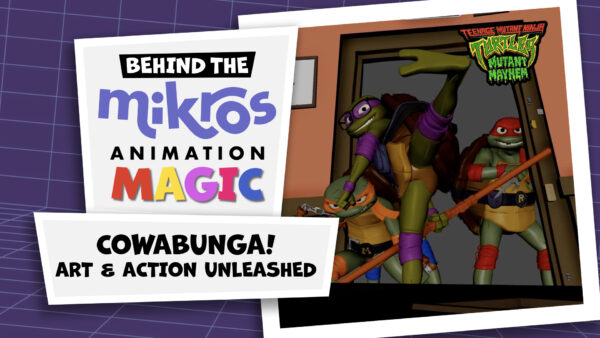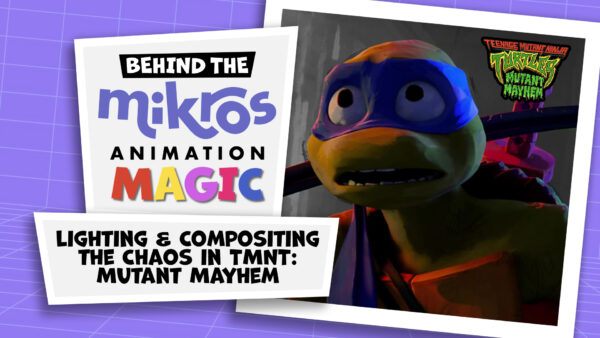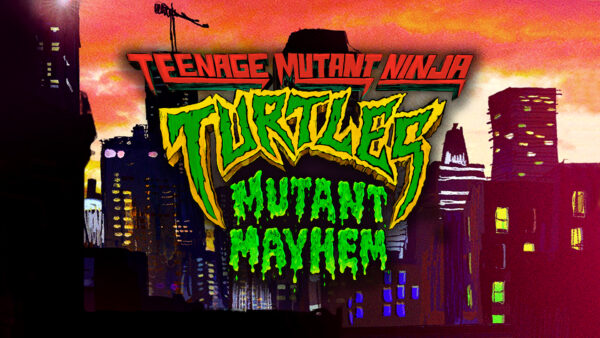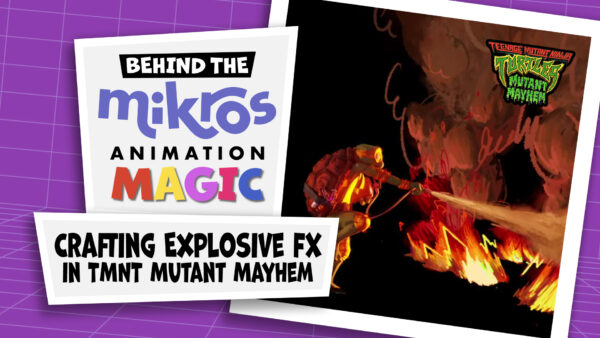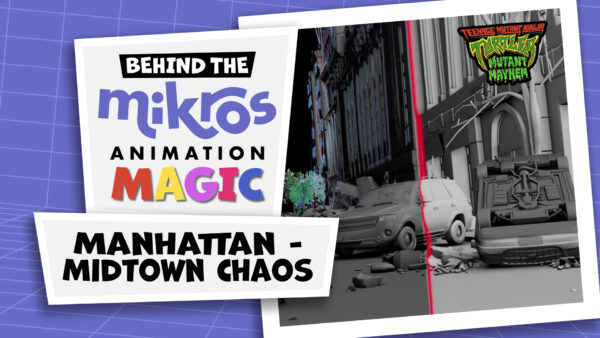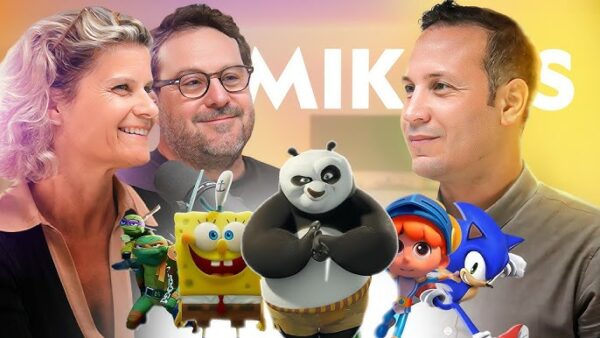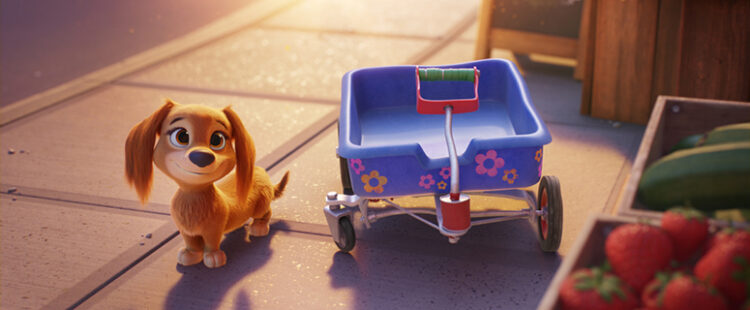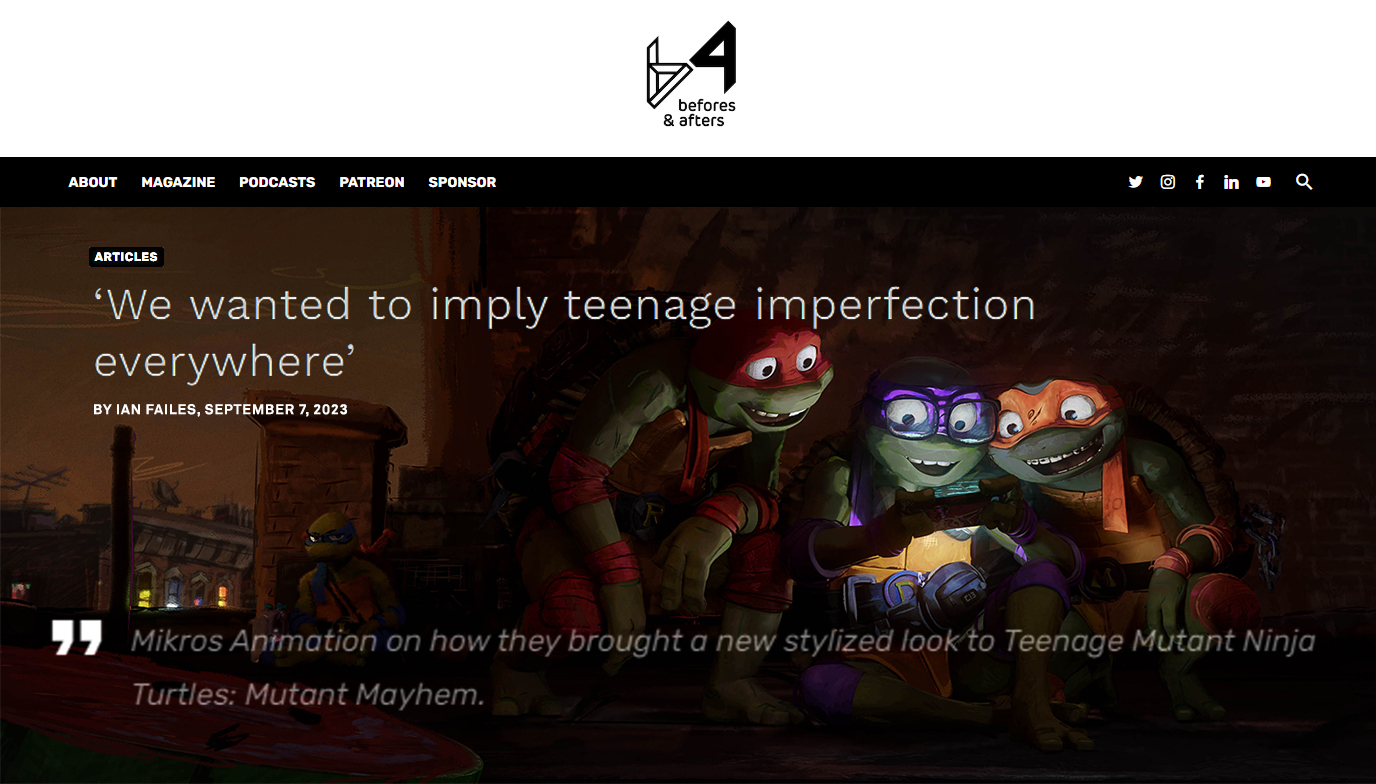
Ian Failes of Befores & Afters magazine spoke to Matthieu Rouxel, the visual effects supervisor on Teenage Mutant Ninja Turtles: Mutant Mayhem.
“The 2D aspect of the picture was intended to give the idea of teenagers drawing their own movie in a paper class book,” says Rouxel, whose team would match 2D references that featured pencil textures, looseness and color shifts, from the creative team. “This meant we needed to bring imperfections on perspectives, proportions, contours and avoid as much as we could a digital feeling to the final render. You need for that to be cleverly approached with a mix of 2D elements–DMP and FX–and CG elements, that is, for those elements to be cohesive and fight against the nature of 3D rendering in many ways.”
Realistic cinematography was also key to connecting more emotionally with the characters, as Rouxel notes. “One of the early challenges we spotted regarding that is the complexity of having a very dynamic and erratic camera locked after the animation of the characters combined with an animation in step and the multiplicity of 2D features added to the pictures such as FX in a challenging production timeline. We had the chance to have DOP Kent Seki the layout supervisor Christin Marineau delivering brilliantly this camera language, but also being very communicative and collaborative with the teams.”
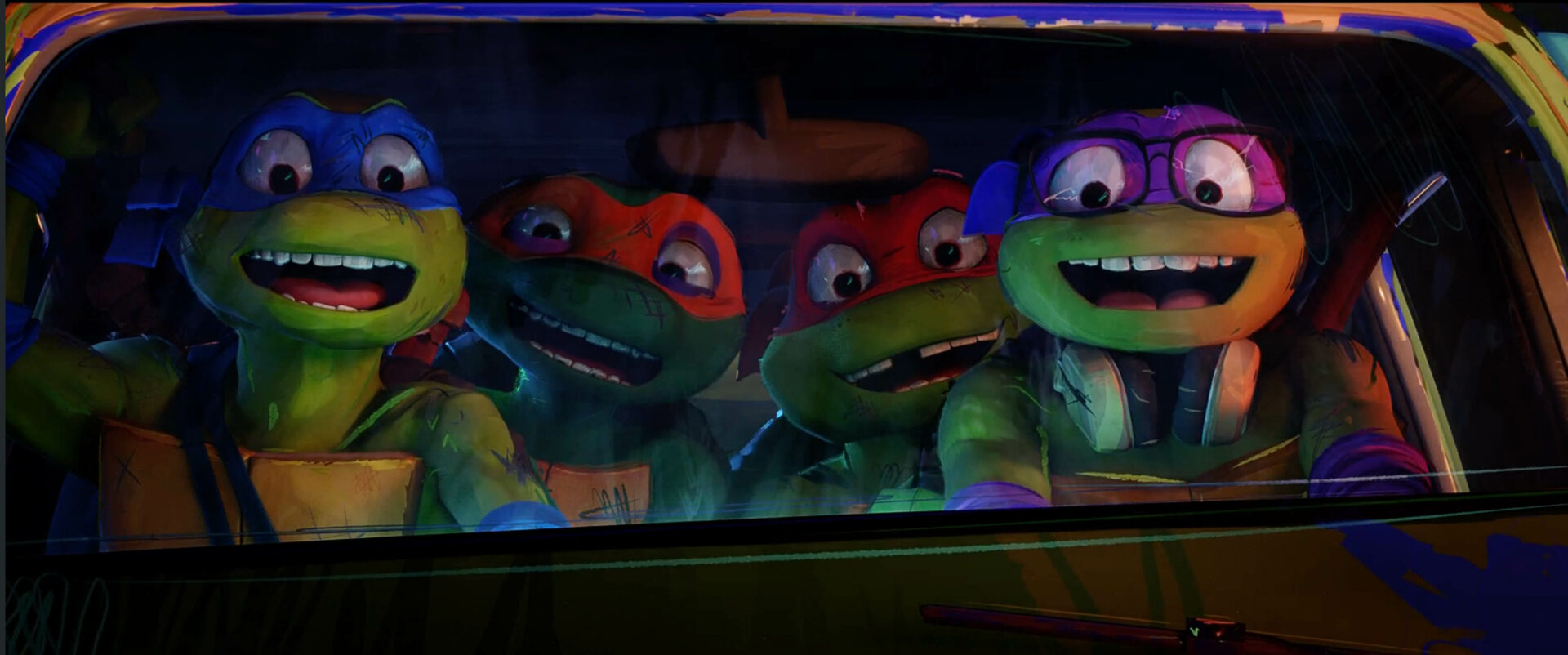
Mikros Animation was one of several studios that completed a test shot for the film. It featured about 40 seconds of animation of Donatello talking. “The global brief was simple in a way,” recalls Rouxel. “We had to match with CG as close as we could to the 2D reference provided. Jeff Rowe was saying that if the picture looks like a 2D painting when it is not moving, that means we are good. Even if the camera was static, it was important for me as a supervisor for the purpose of the test, to build everything in CG–with surfaced elements presented on turntables–including the background, and not ‘cheating’ with use of matte painting and 2D draw-overs to stylize the picture, even if they would contribute a lot to the look of the show later on.”
This test helped inform Mikros Animation of the need to make specific developments in different sides of rendering for the project: stylized shaders, curves and edges.
In terms of stylized shaders, Rouxel says “we explored many options for the treatment of the character and built a shader prototype using the toonshader of Arnold render engine as a starting base. The prototype was good enough for the test but we knew we would need development for the scale of the movie. The goal was for us to have the look of a 2D paint out of lighting render, without having to apply a post process already. Jeff was very specific about getting way from a Photoshop filter feeling.”
“We figured out rapidly regarding the sophistication of the look which was not a simple cell shading effect and had to be different from the baked lighting look we can have sometimes, for example, with Arcane, as gorgeous as it is,” continues Rouxel, “and that we would need to be able to tonemap and add graphic features per light and/or group of lights, making it look as if they were painted one after another with different strokes. We had seven channels of light available for that, which was barely enough regarding the complexity of the lighting we often had.”

At Mikros, lead developer shading/lighting/rendering Marcel Reinhard developed a shader with which artists could isolate lights in the shading of the characters and objects and give them specific treatments. These included scribbles, cross hatching, stepping and color transitions. “We also built a shader and a workflow in Katana dispatching the work between the surfacing team, with presets of stylizations, and the lighting team, who were responsible for modification of colors and position of the stepping,” outlines Rouxel.
“Even if stylized, the lighting style had to be quite realistic. No unjustified rim lights or overexposure of the characters to make them more visible artificially was allowed. That’s part of what makes it successful and cohesive with the animation.”
Surfacing supervisor Anne-Claire Leroux and her character surfacing team utilized the Mikros toonshader to layer in textures. “They could isolate patterns and hatches to make them appear dynamically with the lighting and avoid that baked texture feeling,” says Rouxel. “Environment surfacing supervisor Guillaume Chevet and his environment surfacing team also did great to avoid using any classical CG tilable maps or bump maps,” adds Rouxel. “These would have ruined the illustrative look by bringing realistic texture or high frequency and repetitive detail. It required very good painting and creative skills from the team to approach any material the way an illustrator would do it.”
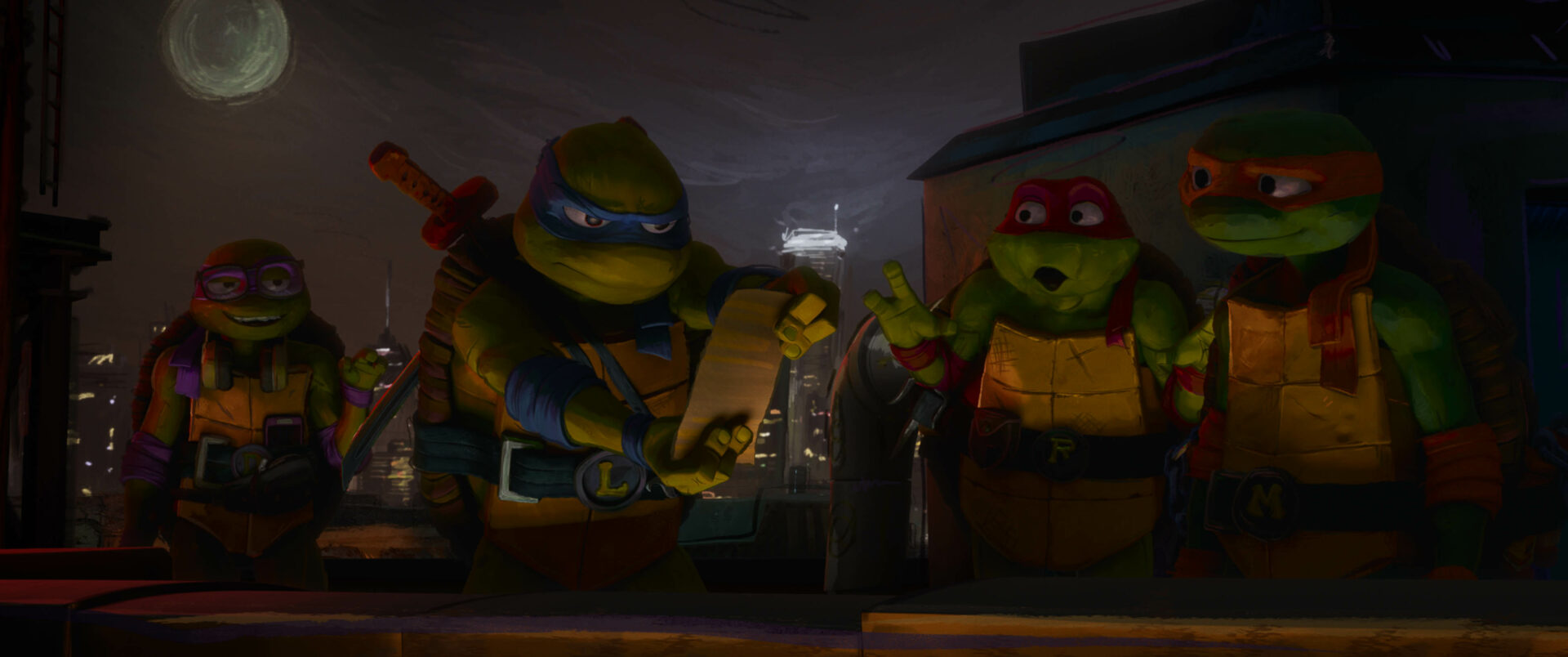
Meanwhile, a curves approach was used to add pencil strokes on top of the render. “They were both present already on the models,” explains Rouxel, “and could also be added by animators or environment artists as expressions lines or speedlines. “They really became an important part of the look, the characters seemed naked without them.”
These curves were achieved via 3D ribbons in Maya and then rendered through Katana. Rouxel advises that Mikros needed to build a shader for the curves to maintain their width and texture whatever distance they were to camera. “Without this, they were just becoming invisible after 30 meters away from the camera. The CG perspective reduced everything naturally, but your pencil doesn’t become thin when you draw elements in the far distance.”
Finally, edges come natively from the toonshader, with Mikros able to tweak their visibility and thickness. The edges helped break the sharp and clean edges of CG objects, and were rendered separately for compositing.
You can read the rest of their fascinating conversation here.
